Happy Tuesday Folks!
One of the reasons why I love to visit museum it's because I am able get connected of the past, although it is painful to know how our countrymen sacrificed their lives in order to defend our land from the terrors. The history that it should not be forgotten but sadly, the story of the past is almost forgotten of today's generation.
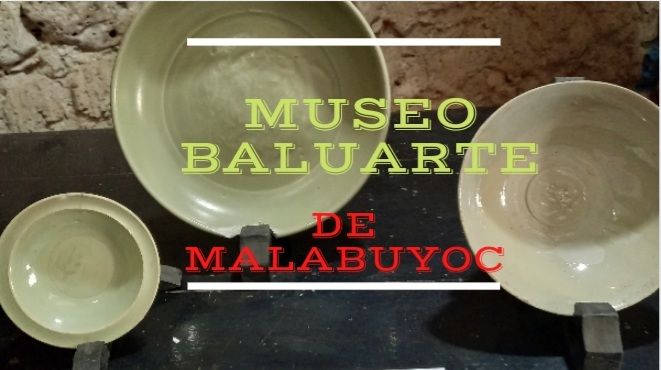
So today, I wanted to share with you my visit in museum as I looked back the glorious story of the past in Museo Baluarte de Malabuyoc.
According to the history......
This rare octagonal design Baluarte or watchtower was built during the Spanish period to guard against the Moro Slave Raiding, which may have been constructed following the 1825 order of Don Manuel Romero the Alcade Mayor (Governor) of Cebu at the time or even earlier.

It was partially damaged during the earthquake of October 15, 2013. This was first inaugurated in February 2005 as the baluarte museum, showcasing various objects collected from different baranggays of the town.
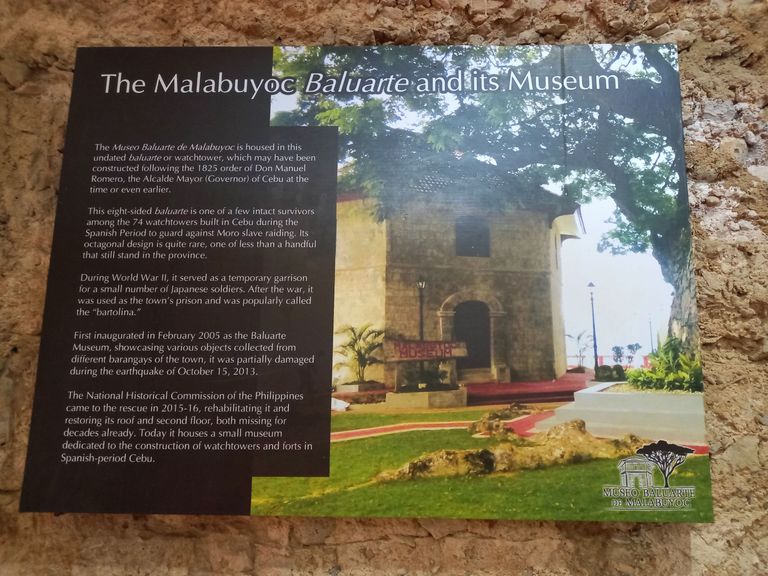
Egg white was one of the components used of building the Baluarte....
I am not an expert of building structures nor have knowledge about it. But in our generation I have never seen that there are still people using white egg in building construction unlike before that the egg white was used as one of the components to build a building. Today, it is already modernized.
I don't know if there are still countries or places in the Philippines this time who have used the same method that the egg whites were mixed with lime mortar and used it as binder.
My bestfriend's grandmother shared us story that long time ago the monks preferred to receive many eggs as people's donation because they will use it in building a church.
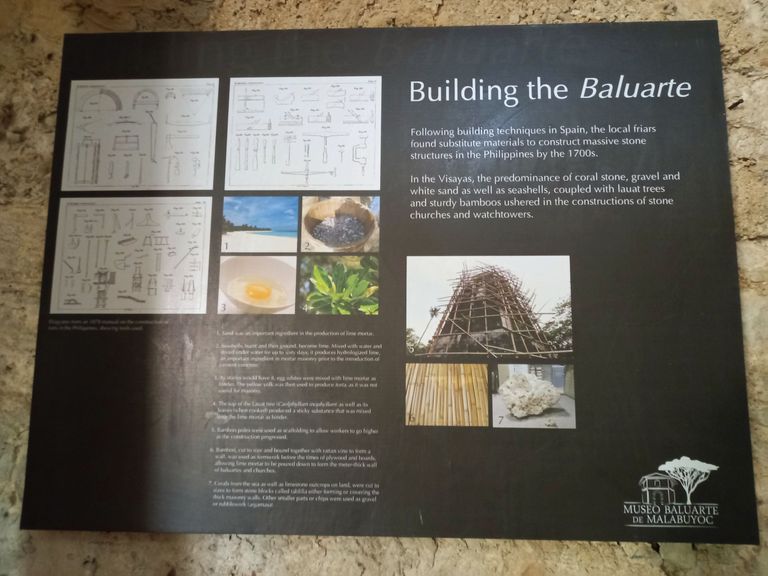
The Moro Slave Raiding.....
For the coastal towns and villages in the Visayas & Luzon like Malabuyoc, much of the Spanish period (and until 1850) was a time of extreme difficulty, due largely to raids conducted mainly by Iranon and Sama Moros from the island of Balanguingui (near Basilan) as well as the Moros of Jolo, who captured many between 1600 and 1850. Every raid was accompanied by the burning of a settlement, forcing survivors to move inland. In Malabuyoc, the hilly portion called Ilihan still shores remnants of such a refuge.
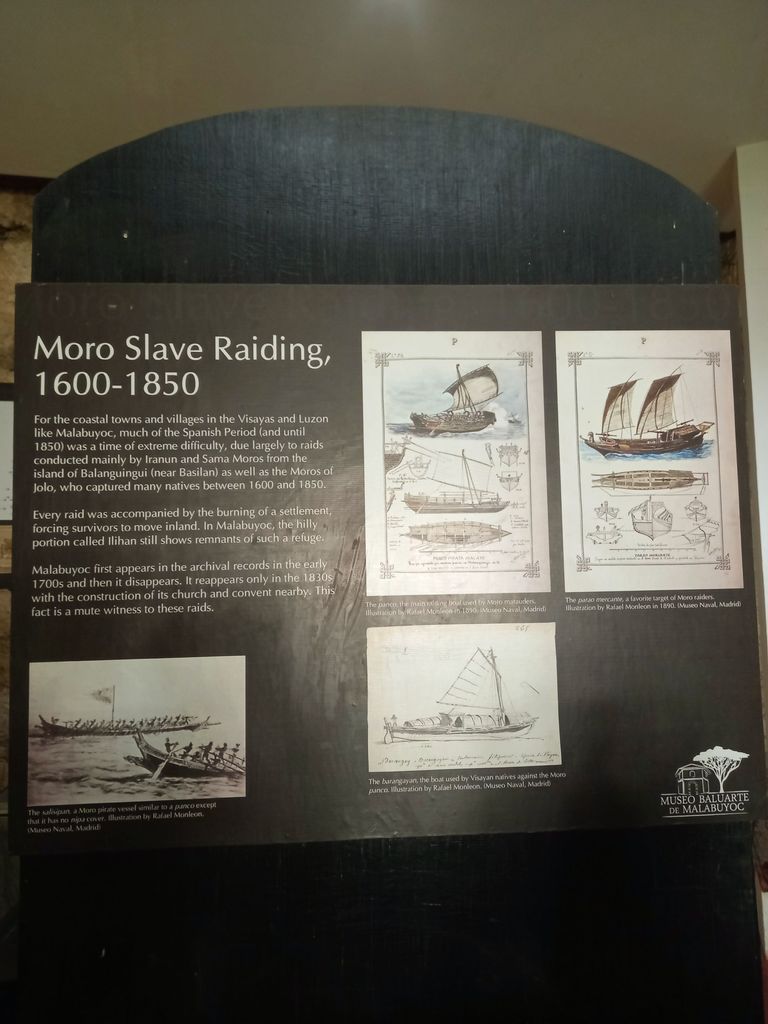
The Trumpet Shell....
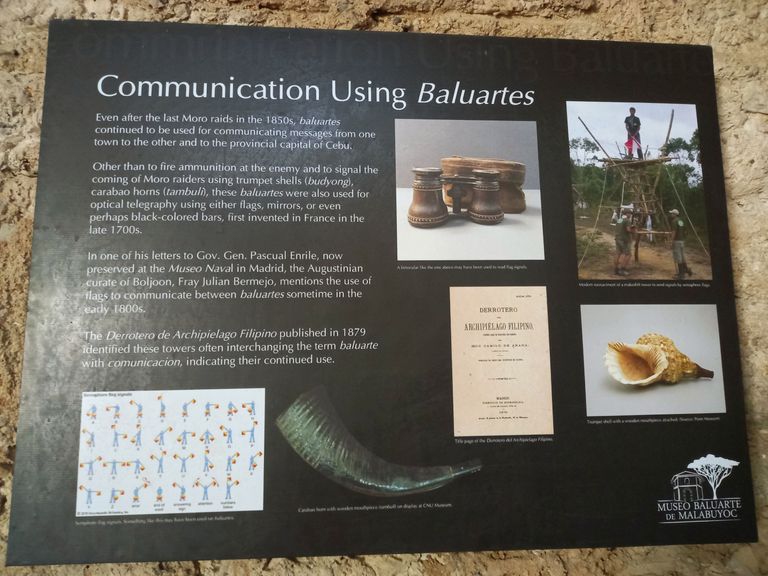
The Triton or Trumpet shell scientifically known as Charonia Tretonis used as early warning device in the watch towers to warn the locals of the approaching Moro Raiders.
Today, the fish vendors in the countryside are still using this as their device to warn the people that they are coming and have some fresh catch fish for sale.

The Barangayan Boats.....
One particular Augustinian, Fray Julian Bermejo, arrived in 1804 in Boljoon and began urging his fellow Augistinians to build watchtowers from Sibonga on the east to Pinamungajan in the West to communicate with each other. Bermejo also organized a Christian navy fleet of barangayan boats to chase and fight the riders, capturing or killing them. This effectively protected much of southern Cebu from these raids and caused the reemergence of many southern Cebu towns, including Malabuyoc.
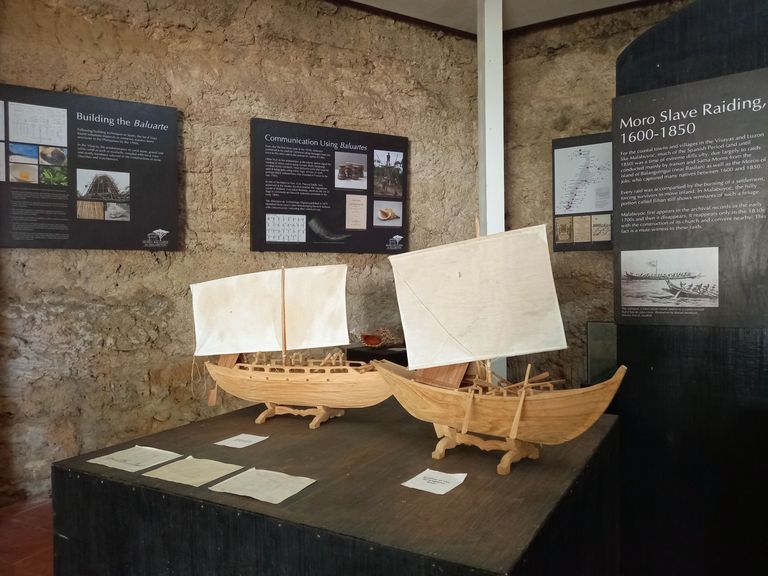
The Weapons.....
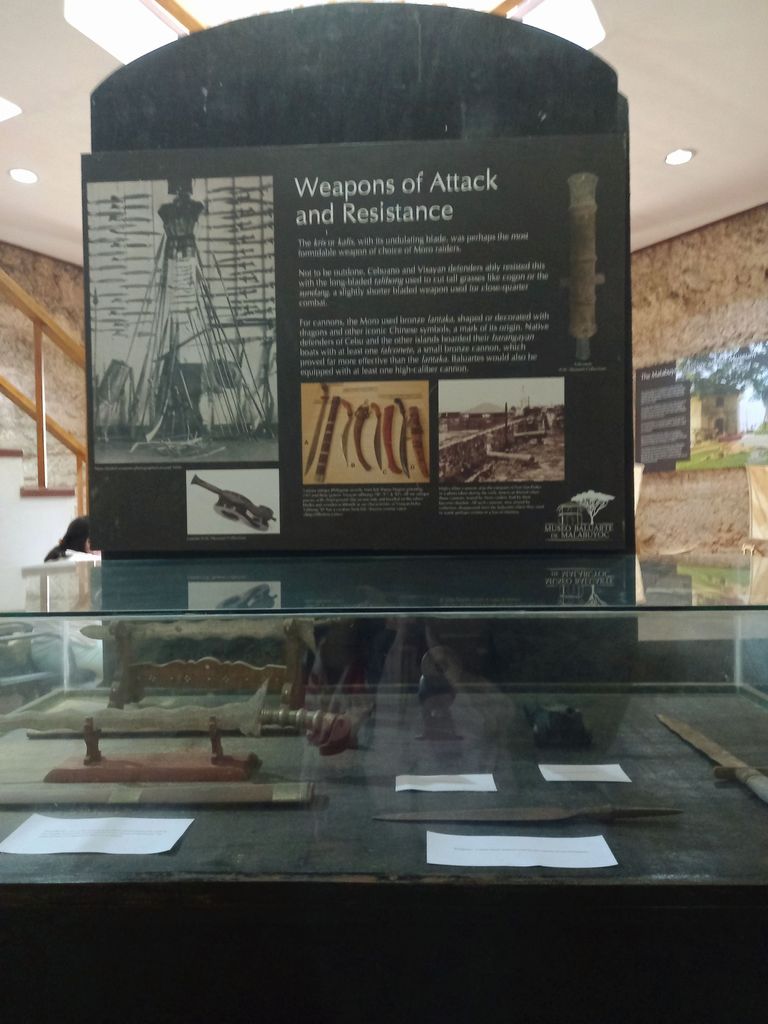
The kris or kalis, with its undulating blade, was perhaps the most formidable weapon of choice of Moro raiders. Not to be outdone, Cebuano and Visayan defenders ably resisted this with the long-bladed talibong used to cut tall grasses like cogon or the sundang, a slightly shorter bladed weapon used for close-quarter combat. For cannons, the moro used bronze lantaka, shaped or decorated with dragon and other iconic chinese symbols, a mark of its origin. Native defenders of Cebu and the other islands boarded their barangayan boats with atleast falconete, a small bronze cannon, which proved for more effective than the lantaka. Baluartes would also be equipped with atleast one high-caliber cannon.
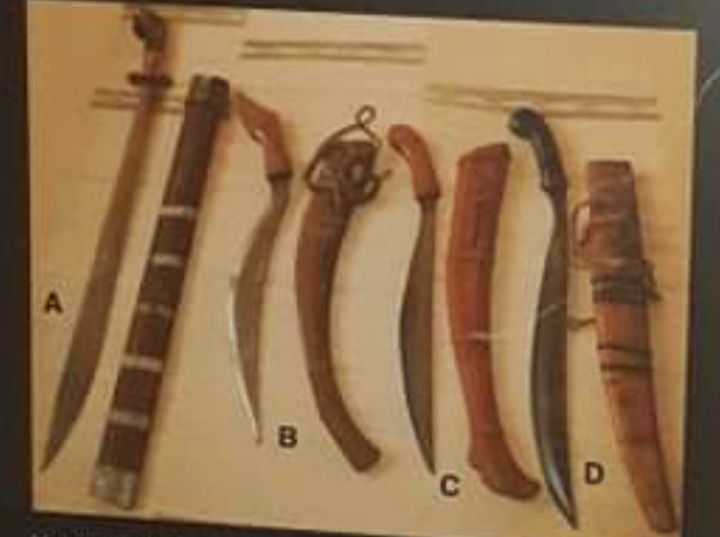
Longquan Ceramics are celadon stone wares produced in the town of Longquan, Province of Zhejiang China, fron the Song of the Mid-Qing dynasties 11th to the 18th century. These ceramics are evidence of the early Chinese barter trade system in the Philippines.

Earthen wares in the Philippines are domestically produced for utilitarian & ritualistic purposes. This Banga or Jar maybe utilized by the locals for various household functions and some for burial rites.
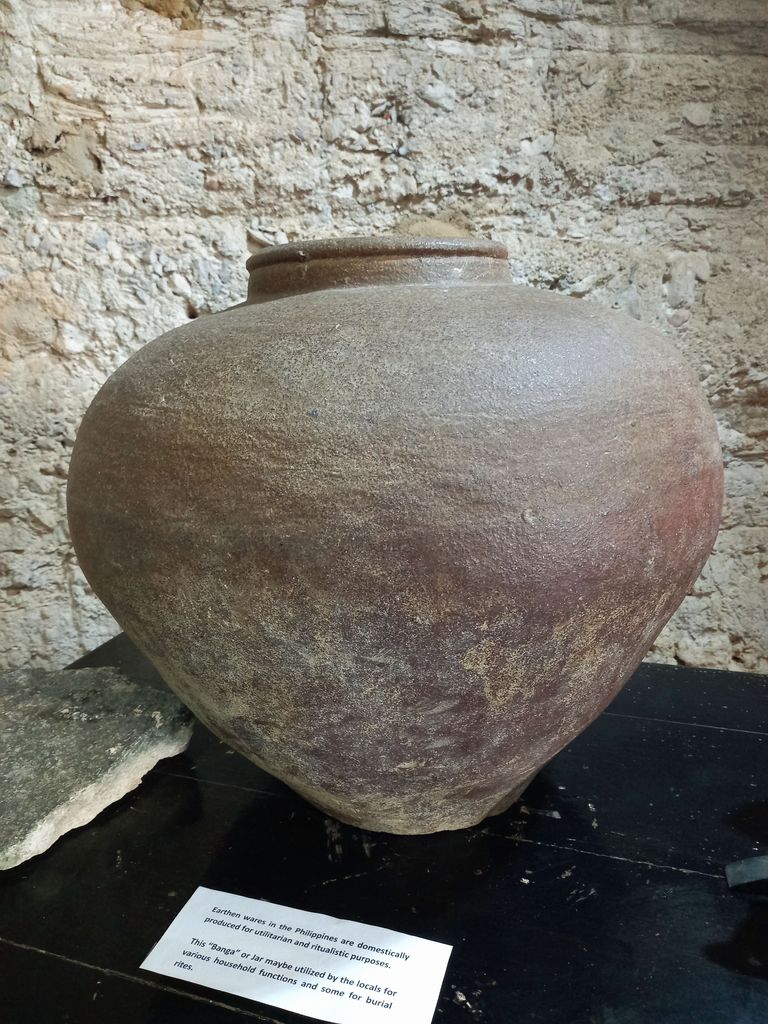
As I went out, my eyes and my mind was full of the glorious story of the past. I was glad as I was able to refresh the history in my mind. I am so grateful to my countrymen because if not because of them, I would not be able to enjoy the liberty, the liberty that they had constantly wished during their time but it was hardly obtained.
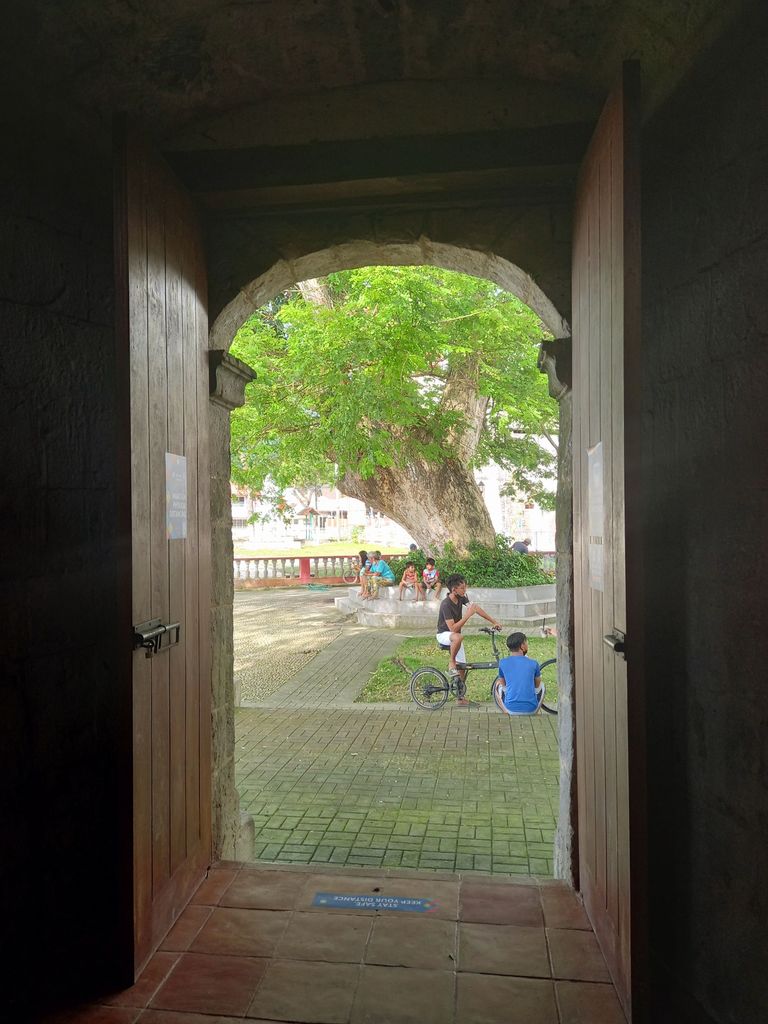
Thank you for reading and see you on my next blog. Cheers!
Watch with glittering eyes the whole world around you because the greatest secrets are always hidden in the most unlikely places.
Discord: kellyane#0924
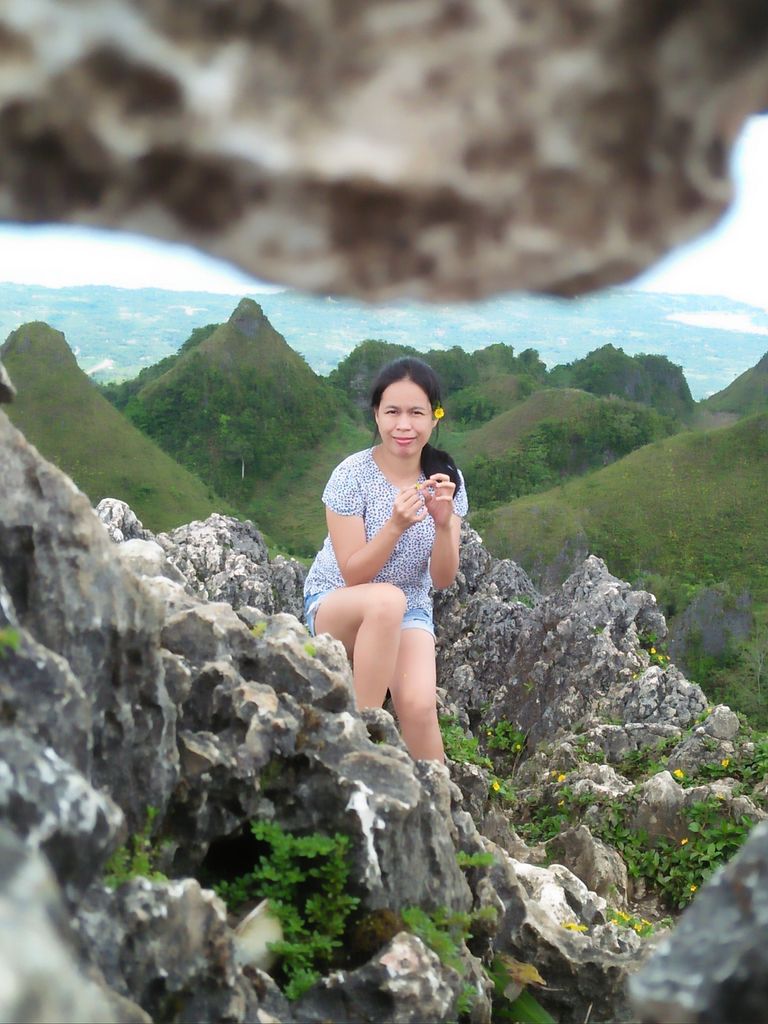
Namaste! I am fond of reading books, watching korean, american and filipino series/movies and I am also fond of gardening. I love listening to different life stories and I am always captivated with the beauty of nature so travel is my escape when life turns into blue. But hey, how could I forget my photography hobby? It is one of the best, so follow me as I will be featuring my experiences of the stuff that I am passionate with.